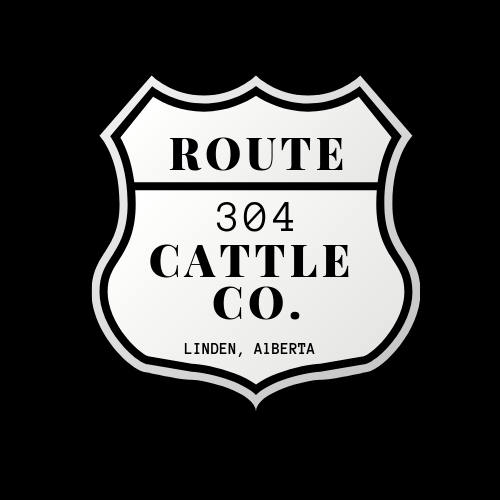Why do we rotationally graze our cattle?
posted on
June 14, 2022

We've been diving into rotational grazing in recent years and it's becoming a passion over here. After participating in a recent regenerative ag study, we figured sharing what we're up to in that aspect might be beneficial to those interested supporting local regenerative farms and ranches.
First off- What does regenerative actually mean? To revive, repair, rebuild, restore, or in plain words, anything that will actively improve soil health.
'What are we doing at Route 304 to improve the soil health?" you might be wondering...
One practice we have implemented is rotational grazing.
Rotational grazing, as opposed to continuous grazing, describes many systems of pasturing, whereby livestock are moved to portions of the pasture, called paddocks, while the other portions rest. We aim to leave adequate grass in the pastures to speed up the plant recovery.
Keeping our herds tighter in the pastures also creates what is called herd impact. The cattle's hooves will stir up the soil, breaking up the seed bed, and stirring up seeds that may have been dormant for decades. Giving that pasture adequate rest after the herd leaves will allow these seeds to take root. It is exciting to think of all these new species introduced back into the pastures after lying dormant in the seed bed for years. Keeping the herds tighter will also cause some forage to be trampled into the soil creating a layer of decomposing matter that will act as a fertilizer as it decays.
Many ag practices simply mine the soil, however by running cattle on our land, 80% of what is consumed can be returned to the pastures through dung and urine.
Another exciting aspect is the improved water holding capacity in the soil. For every 1% of organic matter, the soil can hold 16000 gallons of plant available water per acre to one foot down in the soil! Cover crops are one method we use to help the water holding capacity. Keeping a living root in the soil is essential in improving the soil health, reducing compaction, soil structure, water infiltration, and holding ability.
Our regenerative practices are a work in progress as we learn to know each piece of the puzzle- our plant species, soil, and livestock. We know that each moving part has an impact and will greatly affect the success & sustainability of our ranch.
Regenerative agriculture may be a trendy term, but it is really an opportunity to feed the planet while protecting the earth; you can support this practice too.
How can you be apart of this phenomenal work?
*Buy from local farmers as much as possible. Especially those using regenerative practices.
*Learn more about regenerative practices in you area and around the world.
*Plant your own regenerative garden.
*Share what you learn about regenerative ag to others.



